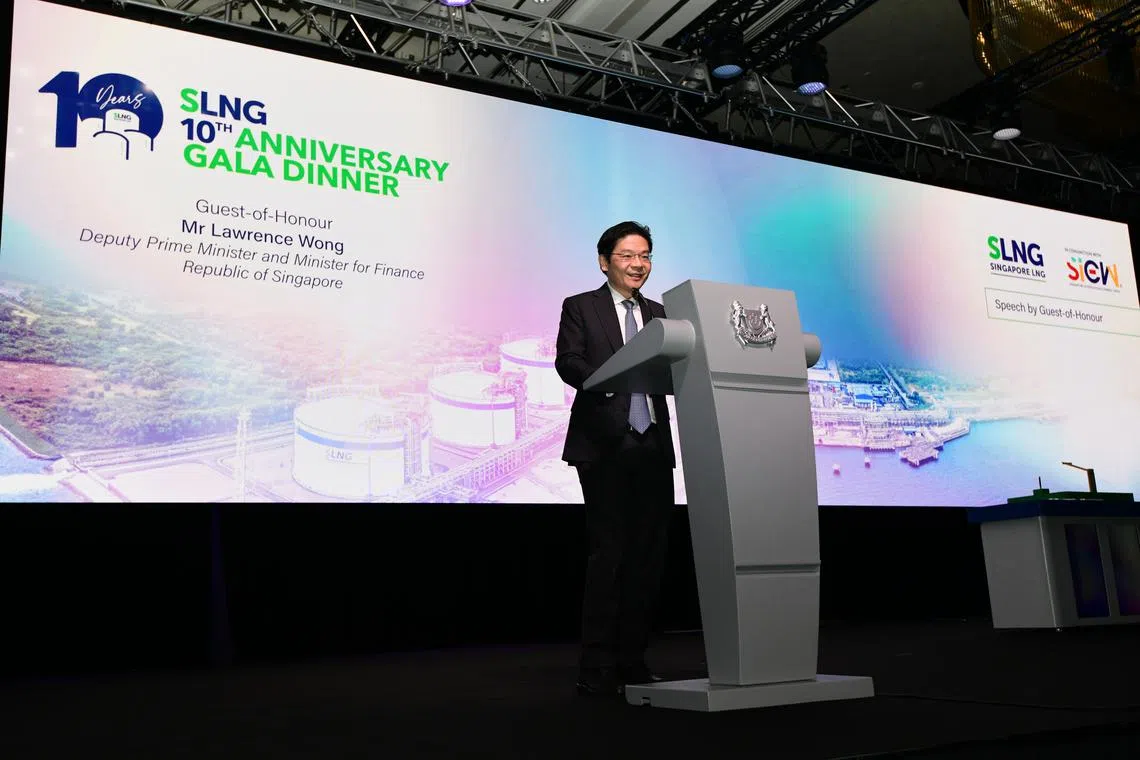Singapore LNG to develop second liquefied natural gas terminal: Lawrence Wong

SINGAPORE LNG (SLNG) will develop and operate a second liquefied natural gas (LNG) terminal in Singapore, 10 years after the first terminal started commercial operations.
Announced by Deputy Prime Minister and Finance Minister Lawrence Wong on Tuesday (Oct 24) night, the new terminal will meet Singapore’s demand for natural gas entirely by LNG and enhance the country’s position as a key LNG trading hub.
“In the short term, we must brace ourselves for continued disruptions in the global energy market,” said Wong, who was speaking at SLNG’s 10th anniversary gala dinner.
LNG will remain an important part of Singapore’s energy mix even as the Republic works to decarbonise its power sector, as “we do not have scalable options when it comes to renewable energy”.

Indeed, Singapore will likely “need more, not less” natural gas in the medium term as the economy continues to grow, Wong noted.
Presently, natural gas powers about 95 per cent of Singapore’s electricity supply.
Navigate Asia in
a new global order
Get the insights delivered to your inbox.
While Singapore has been working on importing renewable energy from surrounding countries, and nascent technologies like hydrogen have shown promise, the energy transition will not be an easy one, said Wong..
The use of LNG in the maritime sector is also expected to increase, he added. “As the world’s top bunkering hub, Singapore is well-positioned to help the shipping industry meet these needs.”
SLNG noted that it aims to start the terminal’s operations by the end of this decade. (See *Amendment note)
Unlike the first LNG onshore terminal on Jurong Island, the new terminal is planned to be based on a floating storage and regasification unit concept, to be engaged on a long-term time charter arrangement. This would allow it to be easily redeployed to another location as a receiving terminal, enhancing flexibility in meeting Singapore’s energy security and sustainability needs, said SLNG.
With a gas supply capacity of up to five million tonnes per annum, or about half of the current SLNG terminal capacity, it will also be connected to Singapore’s gas pipeline grid via an onshore gas pipeline.
Given Singapore’s heavy reliance on natural gas to generate electricity, the current SLNG terminal plays a key role in enabling undisrupted natural gas supply, SLNG noted. It has two jetties and four LNG storage tanks, with a total capacity of 800,000 cubic metres.
Until the end of September, the current SLNG terminal received about 430 LNG cargoes for its send-out service, or approximately 26.6 million tonnes of LNG.
SLNG chief executive Tan Soo Koong highlighted the importance of an additional LNG terminal for national energy security.
“The approval to develop this strategically important project... reinforces the important role that SLNG will continue to play in Singapore’s energy security in the next decade and more,” he said.
*Amendment note: An earlier version of this story said SLNG will be calling a tender shortly for the terminal charter, which SLNG updated that it is still studying the floating storage and regasification unit concept and will provide more information on the tender at an opportune time.
Decoding Asia newsletter: your guide to navigating Asia in a new global order. Sign up here to get Decoding Asia newsletter. Delivered to your inbox. Free.
Copyright SPH Media. All rights reserved.




